Senecio flaccidus var. flaccidus, Threadleaf Ragwort
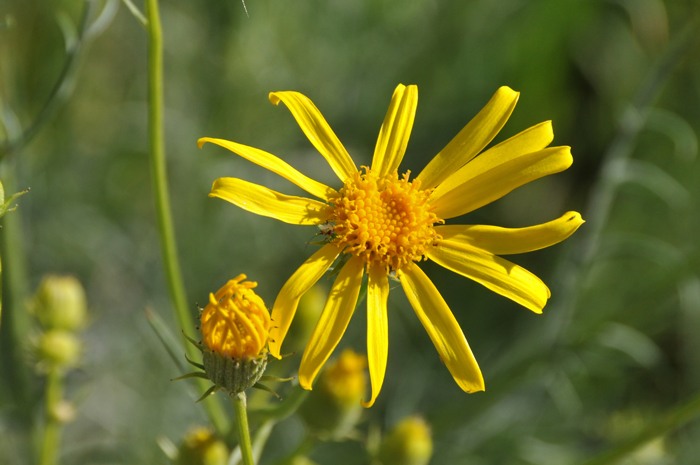
700x465.jpg)
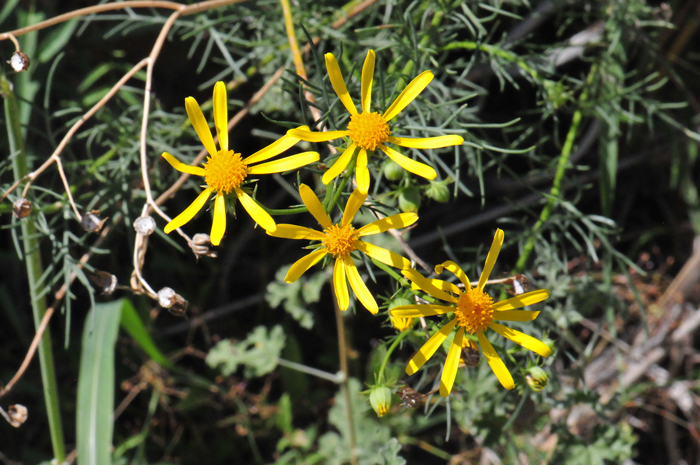
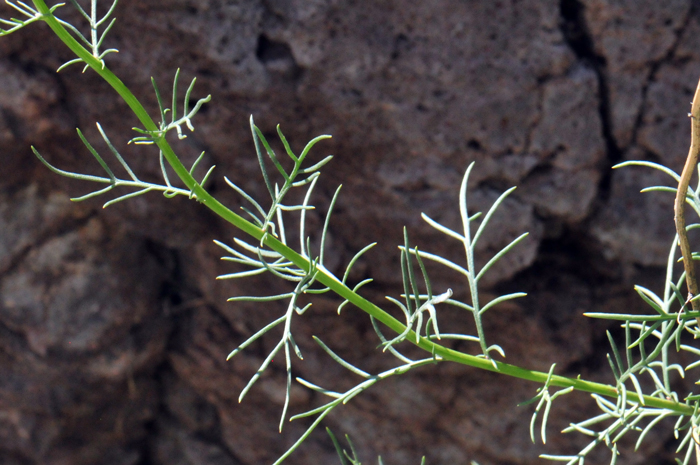
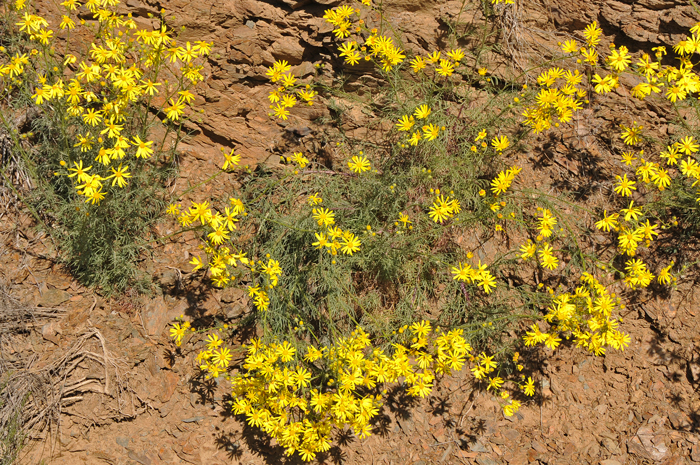
Scientific Name: Senecio flaccidus var. flaccidus
Common Name: Threadleaf Ragwort
Also Called: Threadleaf Groundsel (Spanish: Hierba Ceniza)
Family: Asteraceae, Sunflower Family
Synonyms: (Senecio douglasii ssp. longilobus, Senecio douglasii var. jamesii, Senecio douglasii var. longilobus, Senecio filifolius, Senecio longilobus)
Status: Native
Duration: Perennial
Size: Up to 3 feet (91 cm) or more.
Growth Form: Forb/herb, subshrub; plants upright (erect); woody bases; herbage tomentose with white hairs, sometimes unevenly glabrescent.
Leaves: Green; leaves arranged alternately along stems; leaves linear to filiform or pinnatifid.
Flower Color: Yellow; large and showy; flower heads on tips of branches, 1 or many in clusters; flower head with both ray and disk florets; fruit is a cypsela.
Flowering Season: March and April to July and August; year-round with sufficient rainfall; June to November in Texas.
Elevation: 2,500 to 7,500 feet (762-2,286 m).
Habitat Preferences: Upper and lower desert, pinyon-juniper community, chaparral, mesas, slopes, dry washes, sandy or rocky soils and disturbed areas.
Recorded Range: Threadleaf Ragword is found mostly in the southwestern United States in AZ, CO, NM, NV, OK, TX, UT. This variety is also native to central and northern Mexico.
North America & US County Distribution Map for Senecio flaccidus var. flaccidus.
North America species range map for Threadleaf Ragwort, Senecio flaccidus var. flaccidus:
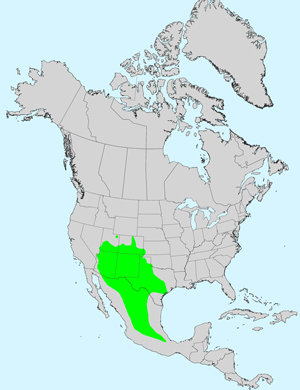
U.S. Weed Information: Unknown
Invasive/Noxious Weed Information: Unknown
Wetland Indicator: Unknown
Threatened/Endangered Information: Unknown
The genus Senecio was published in 1753 by Carl Linnaeus, (1707-1778).
In the Southwestern United States: Arizona has 13 species of Senecio, California has 25 species, Nevada has 15 species, New Mexico has 22 species, Texas has 9 species, Utah has 18 species. Data approximate and subject to revision.
There are 3 varieties in Senecio flaccidus;
Senecio flaccidus var. douglasii, Douglas' Ragwort (CA, CO, KS);
Senecio flaccidus var. flaccidus, Threadleaf Ragwort (AZ, CO, NM, NV, OK, TX, UT);
Senecio flaccidus var. monoensis, Smooth Threadleaf Ragwort (AZ, CA, NM, NV, TX, UT).
According to the Flora of North America, Senecio flaccidus var. flaccidus intergrades at least to some extent with var. monoensis in areas of overlapping ranges; a case could be made for treating the two as distinct species, as done by A. Cronquist (1994). Arizona varieties overlap.
Comments: The flowers of Threadleaf Groundsel (Senecio flaccidus) and it's sub-species are too similar to use as a field identification characteristic.
Threadleaf Ragwort, variety flaccidus is a common large subshrub similar in appearance to Smooth Threadleaf Ragwort, Senecio flaccidus var. monoensis, but may be differentiated in the field where varieties overlap by its silvery or canescent woolly appearance and comb-like pinnatifid leaves.
In Southwest Desert Flora also see Lemmon's Ragwort, Senecio lemmonii, Smooth Threadleaf Ragwort, Senecio flaccidus var. monoensis, Threadleaf Groundsel, Senecio flaccidus and Common Groundsel, Senecio vulgaris.
The genus Senecio is known to contain alkaloids which may cause liver damage in livestock.
The genus Senecio was published in 1753 by Carl Linnaeus, (1707-1778).
The species epithet “flaccidus” (flac'cidus:) is Latin for flaccid.

